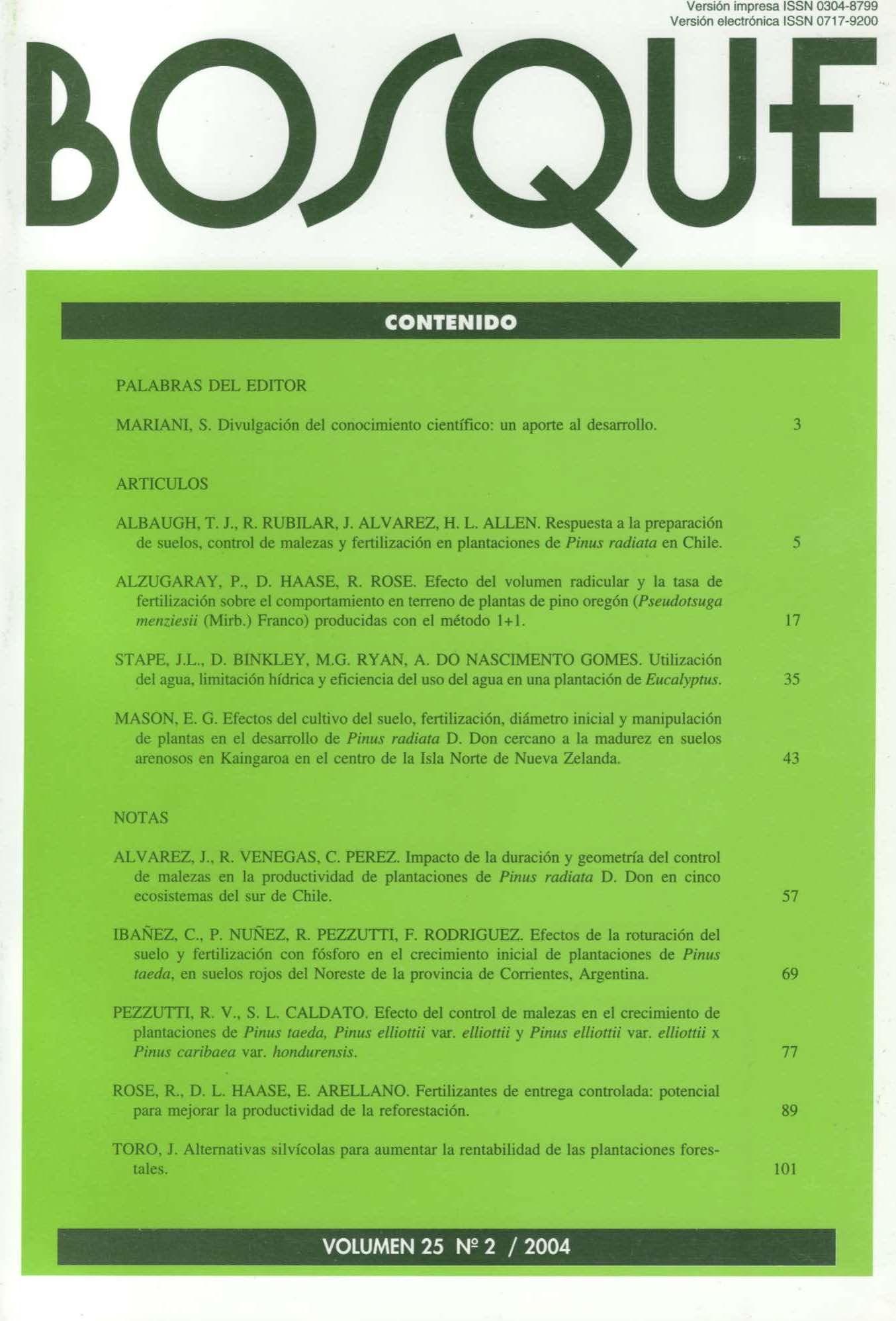Soil ripping and phosphorus fertilization effects on Pinus taeda initial growth in red soils of Northeast Corrientes Province, Argentina
Main Article Content
Abstract
Growth response of a two-year-old Pinus taeda L. (loblolly pine) plantation is evaluated for differing soil preparation and phosphorus fertilization regimes. The study was of first and second rotation sites on the Díaz de Vivar soil series, Kandihumults subgroup of the ultisols order, Corrientes Province, Argentina. A divided plot design was used in each trial, using a factorial experiment of 3 x 2 with three replicates. Treatment was: plowing; 50 and 80 cm ripping plus plowing, combined with 0 and 120 g/plant of triple super phosphate (0 - 46 - 0). On first rotation sites, higher responses resulted from 50 and 80 cm ripping showing a large difference compared with plowed-only areas. At second rotation sites, no significant distinction was seen between soil preparation methods. For both site types, the application of phosphorus had a significant positive effect on growth.

